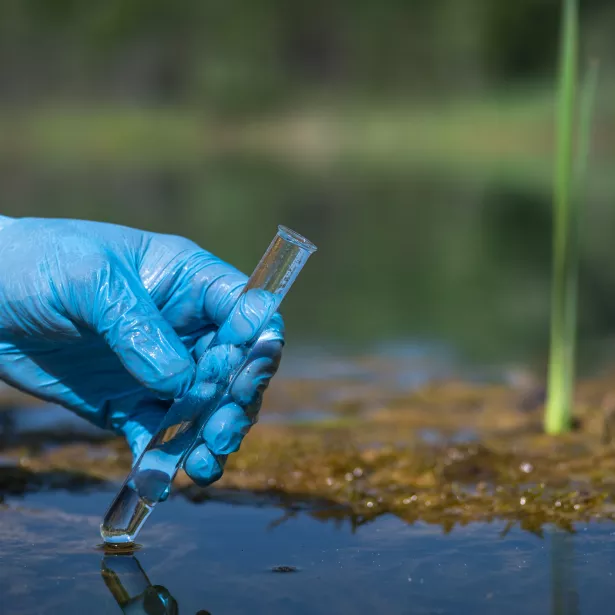September 22, 2022
Leveraging an important biological pesticide to help ensure global food security
Bacillus thuringiensishas been successfully used as a biological pesticide in crop production for over 60 years. Now there is concern that B. thuringiensis may be linked to diarrheal syndrome in humans, but with B. thuringiensis accounting for up to 90% of the biological pesticides currently on the global market, it has a crucial role to play in continuing to support global food security.
The Food and Agriculture Organization estimates that up to 40% of global crop production is lost to pests annually, costing the global economy over $200 billion; at least 35% of this loss has been attributed to crop destruction by invasive insects. Effective and sustainable tools for fighting agricultural pests are needed now more than ever, especially as less environmentally friendly chemical-based active substances are gradually being phased out.
Given the widespread use of B. thuringiensis in agriculture and food production globally, it is unlikely that ingestion of the microorganism causes a substantial number of foodborne illness outbreaks. It is more prudent to carefully determine and manage the risk of foodborne outbreak from B. thuringiensis strains than to completely remove B. thuringiensis-based or -treated products from the market.
Assessing the risks of B. thuringiensis at the strain level requires a shift to a more strain-specific approach, focusing on pathogenicity traits and virulence factors.
B. thuringiensis & Diarrheal Syndrome
B. thuringiensis is phylogenetically closely related to well-known human pathogens within the B. cereus (sensu lato) group. The Bacillus anthracis, Bacillus cereus, and B. thuringiensisspecies of the Bacillusgenus are closely related in their 16S rRNA gene sequence, sharing more than 99% similarity. B. anthracis is the causative agent of anthrax whereas B. cereus (sensu stricto) causes emetic syndrome and diarrheal syndrome.
The genetic regulatory mechanisms for the occurrence of anthrax and emetic syndrome are well understood in comparison to the mechanisms underlying the pathogenesis of diarrheal syndrome. Diarrheal syndrome was widely understood to be caused by consumption of food contaminated by B. cereus (sensu stricto) or its spores from the production of three types of enterotoxins: haemolysin BL, non-haemolytic enterotoxins, and cytotoxin K. Interestingly, genes responsible for enterotoxin production have also been detected in some strains within the B. thuringiensis species, prompting the presumption that they may be linked to diarrheal syndrome.
The regulatory mechanism of enterotoxin genes is complex, and the presence of enterotoxin genes does not necessarily mean they will be expressed, i.e., the expression of enterotoxin genes even when they are present is highly variable. Therefore, consumer risk assessment of B. thuringiensis-treated crops requires a targeted and multi-faceted approach rather than a blanket approach.
Strain-specific risk assessment
Currently, risk assessment of organisms within the B. cereus (sensu lato) group mainly uses a taxonomic approach. However, the tight evolutionary linkage between B. thuringiensis and pathogenic B. cereus (sensu stricto) has made it difficult to finely resolve the phylogenetic differences between B. thuringiensis strains and B. cereus (sensu stricto) based on older molecular diagnostic tools routinely used in many laboratories.
Assessing the risks of B. thuringiensis at the strain level requires a shift to a more strain-specific approach, focusing on pathogenicity traits and virulence factors. More recent technologies for unequivocal strain typing, pathotyping, toxin-related gene profiling and toxin quantification offer promising novel approaches for food microbiology diagnostics and consumer risk assessment. For example, whole genome sequencing is a state-of-the-art and relatively cheap technique to determine the source of B. thuringiensis strains and their relatedness to genomes of isolates linked to foodborne outbreaks.
Risk management approaches
The European Food Safety Authority has recommended 105 CFU/g food as the alert value for B. thuringiensis counts. Crops and food should be regularly monitored to ensure that B. thuringiensis counts are much lower than that, and sufficient time should also be allowed between the last application of B. thuringiensis products to crops and harvesting for viable B. thuringiensis spore counts to decrease below the alert threshold.
Temperature control (cooling and storage) and heat treatment methods can also be used to prevent germination and limit growth of B. thuringiensis vegetative cells and spores in food. However, the applicable treatment methods may vary depending on the type of crop or food. Performing assays for routine detection and quantification of enterotoxins in B. thuringiensis-based products before placing them on the market is also a useful approach.
How Exponent Can Help
Exponent's Chemical Regulation & Food Safety practice can serve as an integrated partner for food and crop production companies in designing control measures for food production and agricultural practices to mitigate the risk of adventitious B. thuringiensis contamination of food above tolerable limits. Our experts can also conduct risk assessments to determine situations where use of B. thuringiensis-based products in crop production is more likely to present health risks through a combination of rigorous review of published literature, assessment of available data on B. thuringiensis-related food illness outbreaks or incidents, evaluation of strain-specific genomic data for potential virulence factors and pathogenicity traits, exposure modelling, and other ad hoc risk assessment approaches. Where assessment shows unacceptable risks are unlikely, Exponent can prepare reasoned justifications to support application to regulatory authorities for the authorization of B. thuringiensis-based products.
What Can We Help You Solve?

Biocides in Europe
Full product lifecycle strategy support, specializing in active substances.

Chemical Regulation & Food Safety
Overcome global regulatory challenges for food, pesticides, and personal care products.

Plant Protection Products
Meet EU regulatory requirements for plant products while protecting the environment, as well as human and animal life.


